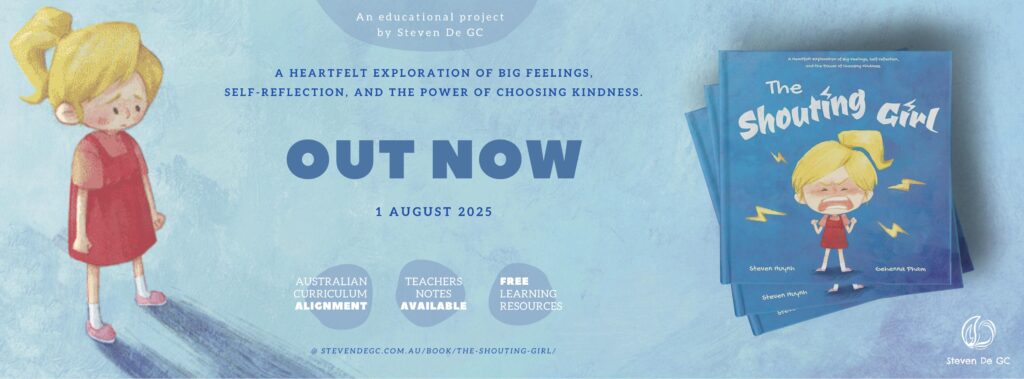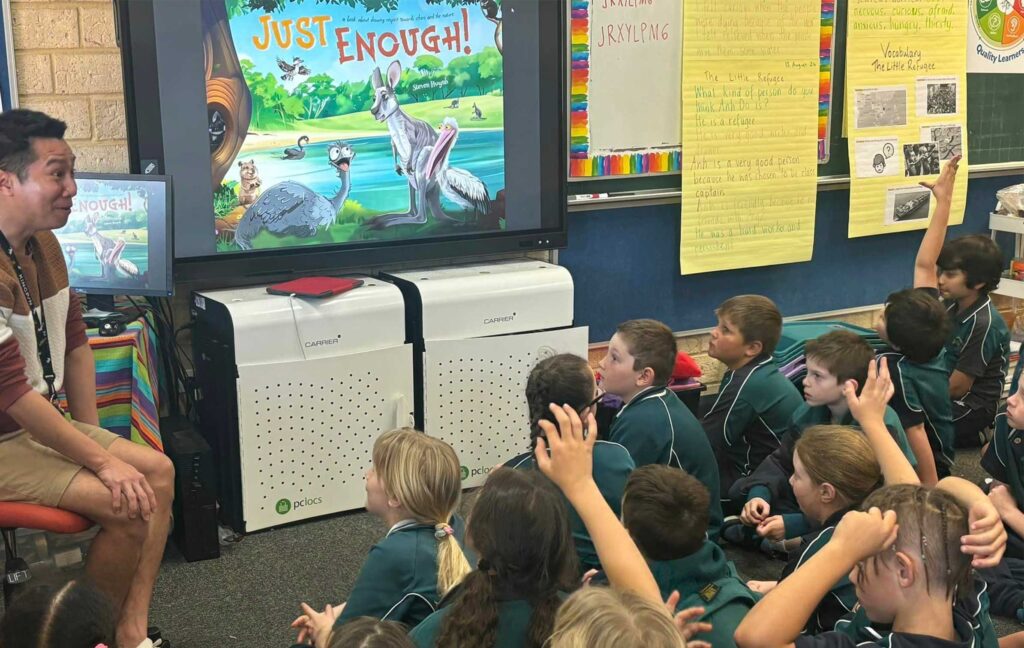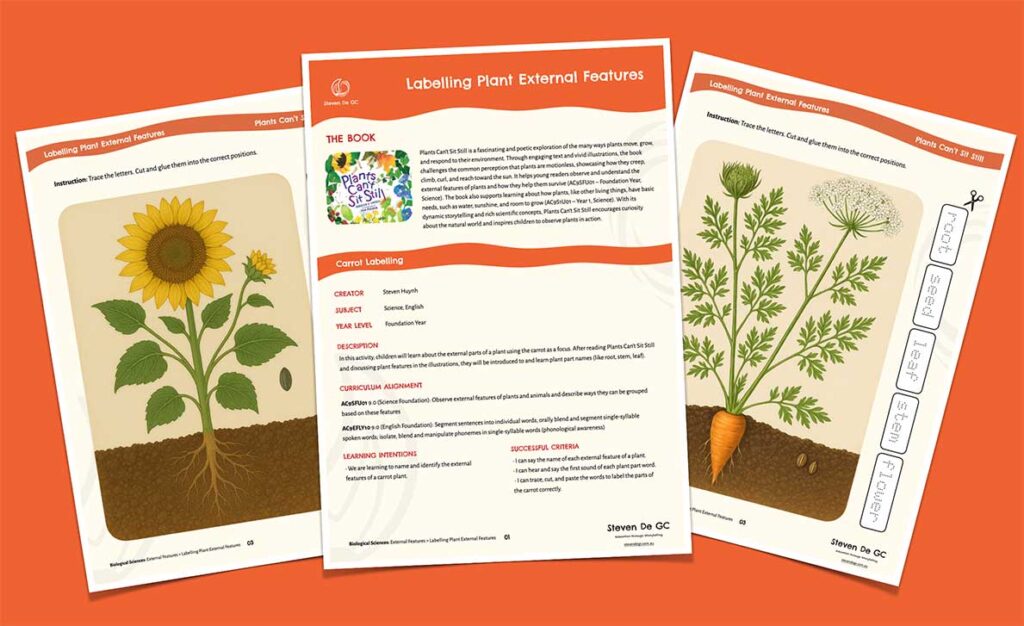Below are some features that teachers and/or parents can use to create prompts while reading. However, feel free to discuss anything you believe is important to children.
The purpose of Dialogic Reading is to make reading a more enjoyable and interactive experience. Click here to learn how Dialogic Reading works.
Example
- Teacher/Parent: How did Kookaburra know the rain was coming?
- Child/ren: He was looking at the dark clouds.
| Feature(s) | Inference(s) |
|---|---|
| The Southwest | The southern part of Western Australia. |
| Kookabarra looking at the dark clouds | The rain was coming. |
| The disappearance of the quandong fruit from the tree | Emu hoarded all the food. |
| Emu’s stomach was growling | Emu was hungry. |
| The meadow turning yellow | Fresh grass was taken by the mob (of kangaroos) |
| The rock dam | (The rest of) the river would be drained away. |
| BARREN! | Trees were dying. They couldn’t produce anymore fruit. |
| Possum moving from tree to tree for his shelter | He lost his home, as the trees were dying. |
| Then No Air! | There would be no air without trees. |
| The animals’ actions in the end | They righted the wrong, showing the idea of respectful relationship with their peer animals. |
| Just Enough! | One’s self-awareness about sharing and the decent use of resources. |
Feel free to share your own ideas and inferences in the comments below.





![[T4R] Let’s Build a Boat: L11 Evaluation and Reflection [T4R] Let’s Build a Boat: L11 Evaluation and Reflection](https://stevendegc.com.au/wp-content/uploads/2025/05/LetsBuildaBoat-T4R-Lesson11-Cover-1024x626.jpg)
![[T4R] Let’s Build a Boat: L10 Summarising [T4R] Let’s Build a Boat: L10 Summarising](https://stevendegc.com.au/wp-content/uploads/2025/05/LetsBuildaBoat-T4R-Lesson10-Cover-1024x626.jpg)
![[T4R] Let’s Build a Boat: L9 Making Inferences [T4R] Let’s Build a Boat: L9 Making Inferences](https://stevendegc.com.au/wp-content/uploads/2025/05/LetsBuildaBoat-T4R-Lesson9-Cover-1024x625.jpg)
![[T4R] Let’s Build a Boat: L6 Writing a Boat-making Procedure [T4R] Let’s Build a Boat: L6 Writing a Boat-making Procedure](https://stevendegc.com.au/wp-content/uploads/2025/05/LetsBuildaBoat-T4R-Lesson6-Cover-1024x626.jpg)
![[T4R] Let’s Build a Boat: L5 Connecting to a Different Text [T4R] Let’s Build a Boat: L5 Connecting to a Different Text](https://stevendegc.com.au/wp-content/uploads/2025/05/LetsBuildaBoat-T4R-Lesson5-Cover-1024x626.jpg)
![[T4R] Let’s Build a Boat: L4 Literal Retrieval [T4R] Let’s Build a Boat: L4 Literal Retrieval](https://stevendegc.com.au/wp-content/uploads/2025/05/LetsBuildaBoat-T4R-Lesson4-Cover-1024x626.jpg)
![[T4R] Let’s Build a Boat: L3 Making Connections [T4R] Let’s Build a Boat: L3 Making Connections](https://stevendegc.com.au/wp-content/uploads/2025/05/LetsBuildaBoat-T4R-Lesson3-Cover-1024x625.jpg)
![[T4R] Let’s Build a Boat: L2 Making Predictions [T4R] Let’s Build a Boat: L2 Making Predictions](https://stevendegc.com.au/wp-content/uploads/2025/05/LetsBuildaBoat-T4R-L2-Cover-1024x627.jpg)
![[T4R] Let’s Build a Boat: L1 Background Knowledge [T4R] Let’s Build a Boat: L1 Background Knowledge](https://stevendegc.com.au/wp-content/uploads/2025/05/LetsBuildaBoat-T4R-L1-Cover-1024x626.jpg)

Leave a Reply